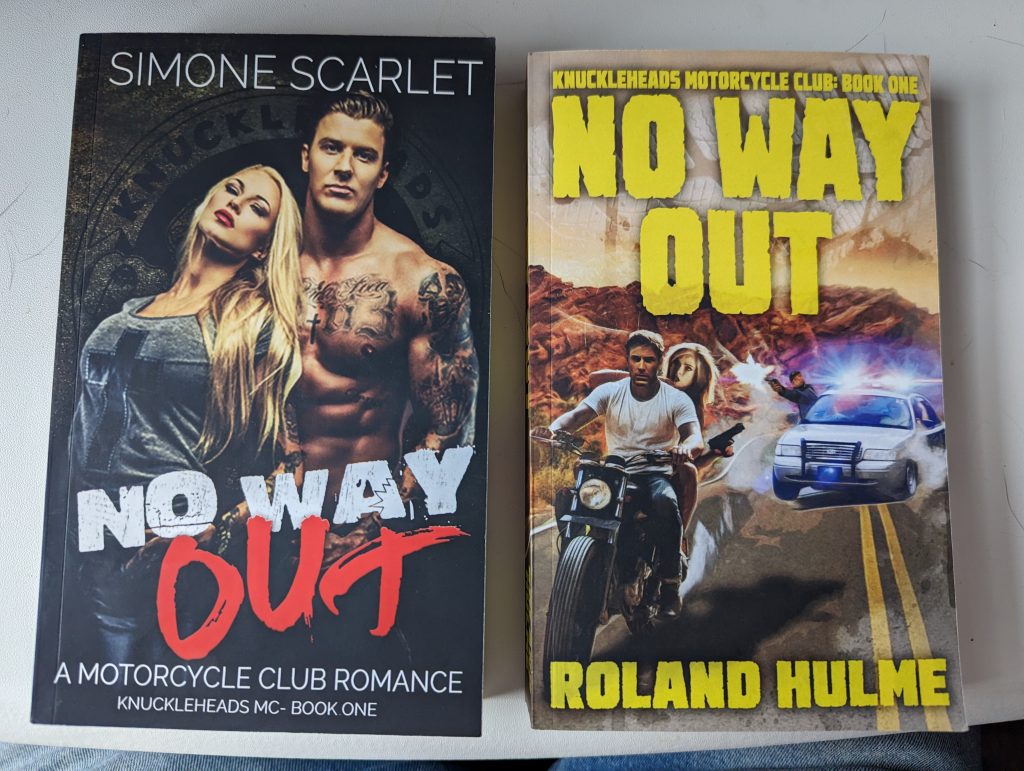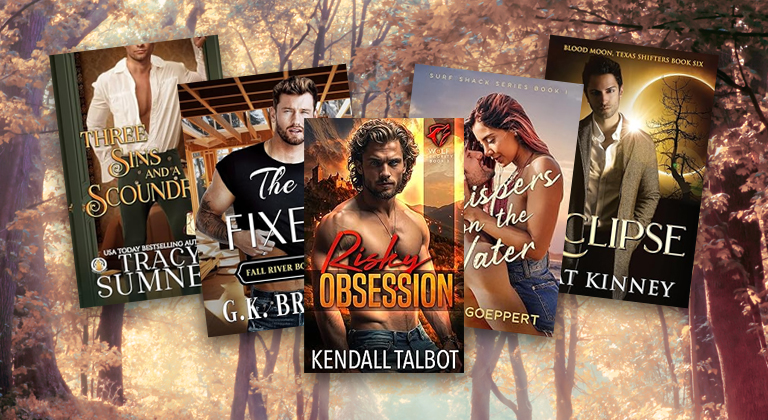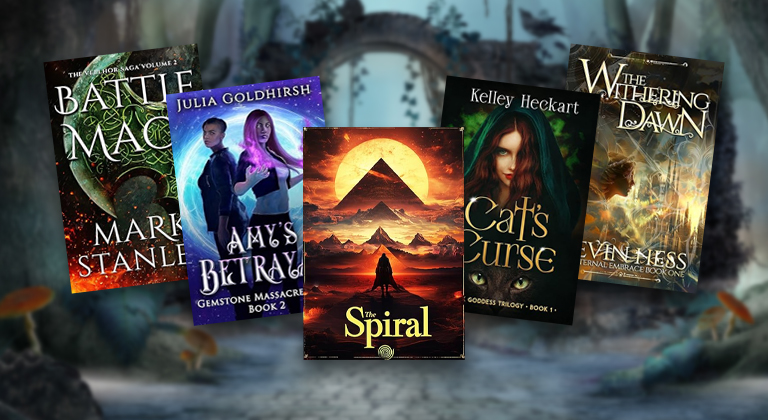Navigating the Challenges of Publishing Alternative Editions
One of things that authors love most about self-publishing is the freedom to make your own choices with regards to your work. You can do whatever it is you think is right for your book, without a publisher looking over your shoulder and second guessing your decisions and ideas, if not overruling or blocking them completely. Unfortunately, it’s that same lack of oversight that, over the years, led to many authors finding ways to game the system in their favor, turning Amazon’s early eBook storefront into a big mess and eventually leading them to the creation of broad rules designed to reign people in.
The side effect of all this was that those rules often also block authors from making completely legitimate and creative choices with their own work, such as creating alternative editions of their books, or publishing copies with covers that appeal to a different audience. You can still do some of those things, but as Ginger recently found out the hard way, you have to be careful in how you go about it or you run the risk of having your content pulled from the store. Understanding the rules is one of the first steps to learning how to navigate them successfully, and if you’re careful, you can still make choices that can lead you to reaching greater audiences and increasing your sales.
2023 will mark 10 years since I first started my self-publishing journey – and what a ride it’s been! I’ve gone from publishing smutty short stories that earned a few hundred a month to writing best-selling romance novels and earning over $280,000 in royalties!
But it’s been far from plain sailing – and back in the early days, I kept finding myself getting dinged by Amazon for rookie mistakes like unsuitable covers, or content that was later disapproved of (remember that weird period in which everybody was publishing stepbrother romance books? I’m ashamed to say I tried that once.)
A decade later, I’ve come to enjoy a relatively uneventful relationship with Amazon. I’ve learned to focus on writing and publishing the best books I can, and Amazon has been supportive in trying to put them in front of potential readers.
However, this week I wound up butting heads with Amazon for the first time in years – and I fear it might be the start of an increasingly common problem.
Alternative Editions, Discreet Covers, etc…
Just as I’d mentioned the trend of publishing stepbrother romance books back in the day, there’s another trend on Amazon at the moment that seems to be fairly widespread – discreet covers.
Many successful romance authors receive feedback from their readers that they love the books… but the covers featuring shirtless guys and steamy embraces are a little more racy than they’d like to be publicly seen reading. Therefore, some authors have taken to publishing the same books with discreet covers.
They’re not the sort of covers that are going to see a book skyrocketing up the bestseller ranks (in romance, a bare-chested man helps with that.) However, they’re beloved by super-fans of certain authors, and exist on Amazon right alongside their more racy twins. Often they’ll be published as different books with unique ASINS, but inside they’re exactly the same story.
Most romance authors who do this experience no problems with Amazon because they own the copyright to these books, and they exist for a specific audience of their readers. However, publishing alternative versions of the same book actually violates Amazon’s Terms of Service, and can land you in trouble…
…and I know – I found out the hard way.
Same Book, Different Audiences
I write a successful romance series under a female penname, but in recent years have been experimenting with publishing the same books with dramatically different covers designed to appeal to a different audience (in this case, male readers.)
I did this for a number of reasons – not least of which that I’m proud of these books, even if they’re only romance novels (I hate the way people think that.) As a male writer of romance, I’ve found that a lot of my male friends REALLY dig the way I tell stories and I wasn’t ashamed to have them attached to my real name.
I think that’s because I write them strictly according to the style of romance novels, but I feature all the guns, explosions, and motorcycles male readers like. They’re kind of a fresh new take on thrillers and I’ve really loved the reaction they’ve received. I even had one couple each read the different versions of the same book and provide their feedback!
Just to be clear, I market these books with complete clarity. I even came out to my subscribers in a video so that there was no confusion. I wasn’t trying to double dip and sell the same book twice. The two different versions exist in support of each other – I’m trying to fight the idea that there are “books for men” and “books for women” when in general, most books appeal to both.

But last week, I received a notification from Amazon that the first book in my MC romance series – the one published under my female penname, with the bare-chested man on the cover – was being removed from sale. Here’s the message I received:
“We found that the following book(s) causes a disappointing customer experience because the content is not significantly different from content in another book previously submitted through your KDP account.”
Amazon Content Review Team
I was horrified when I received this email – not least of which because I was actively advertising the book at the time, and now I was paying $0.20 a click to send readers to a cannot find that product page on Amazon!
The issue, it turns out, was that the male version of my book – the one with the exciting motorcycle chase on the cover – was largely the same book as the female version. I ultimately agreed to remove the one published under my own name from sale until I figured out how to satisfy Amazon that they were suitably differentiated.
But the damage had been done. My revenue for that week dropped 60% and the momentum hasn’t really built back since – not to mention I still haven’t figured out how best to tackle the issue (I’m really proud of these books, so I don’t want to have to choose between one version or the other.)
Yet, at the same time, I can kind of see Amazon’s point.
Why doesn’t Amazon like multiple versions of the same book?
Amazon has a multitude of rules in place to help ensure the best experience for their customers, and that includes preventing people from publishing “disappointing” content.
This can be a book that isn’t well edited or written, or contains formatting errors, or would leave a customer disappointed for any other of a multitude of reasons – including if a customer bought two separate books thinking they were different, but they ended up being the same.
Now, in my case – and in the case of authors who publish alternative discreet cover editions – I don’t think this duplication results in a “disappointing customer experience.” I don’t think there is much crossover between the people who’d buy my bare-chested romance book and those who’d buy my motorcycle chase thriller book. Likewise, if an author has steamy and discreet covers, but publish them under the same penname, it should be fairly clear what the two books are and why they exist together.
But that’s not the case for all authors. As frustrating as my experience with this was, I have to concede that the Kindle marketplace has always been beset by unscrupulous publishers trying to make a quick buck and I respect how Amazon tries to apply rules to prevent that.
Book scammers are always ruining things for everybody. It used to be with book stuffing. Then it was low content publishing. Now it’s AI generated books. I can understand that the option of publishing exactly the same book multiple times is ripe for abuse and because of the sheer scale of Kindle publishing (with over a million books published every year) it’s difficult to protect people from scammers while at the same time allow people like me to do creative things like have alterative versions of the same book.
My concern is where the line is drawn, however. I thought that the two different versions I had of my book were VERY clearly differentiated. Just look at the covers for a start! As Amazon’s backend systems – including the increasing use of AI – are able to identify books that duplicate content, is my experience just the tip of an iceberg? Will authors with discreet covers be hit next?
Does having your book included in a boxed set count as “significantly different” content? What if it’s included in multiple boxed sets? Where is the line drawn? How can you avoid being on the wrong side of it?
Playing by the Rules
Unfortunately, Amazon are consistently vague when it comes to all their rules and terms of service, and when it comes to making sure one book is significantly differentiated from another, they don’t provide any standards to track that.
Just like with most problems we run into with Amazon, however, I think a good place to start is by considering the customer experience. If you have boxed sets, discreet covers, or another alternative version of a book you’ve already published under a different ASIN – how could a customer react to stumbling across it?
In the case of books with discreet covers, or versions of books similar to mine – differentiated for a male or female audience – a customer would hopefully understand the difference immediately. As long as they don’t get confused, or run the risk of feeling disappointed (or flat up complain that they “bought the same book twice”) I think you’re morally in the clear. Your books are your own personal copyright, after all – you should be allowed to republish them however you’d like!
But to meet Amazon’s standards, I think it’s important to make sure you do two things:
- Make sure it’s clear in the blurb and product page of each book that another version of this book exists, and why another version exists. You don’t want customers to get confused.
- Make sure the contents of the book are differentiated enough not to get tripped over by Amazon’s algorithms. Behind the scenes, Amazon has bots trawling the World Wide Web and the contents of millions of published books to make sure nobody is violating copyright by republishing existing content. Your manuscript has to be different enough not to trigger these bots.
In the case of boxed sets, this is pretty easy – you’re not going to confuse a three-book bundle for a single book in a series, even if that bundle contains the single book in the series. Amazon would look at the wordcount alone (maybe 200,000 words as opposed to 70,000) and immediately know that the product is different.
For shorter books, though, it’s more important to build out a unique manuscript for each edition. Using the guidelines Amazon has for republishing content that’s in the public domain might be a great place to start. They allow authors to republish content that’s in the public domain (like the Sherlock Holmes stories, or example) as long as it’s “differentiated” from the original. Some suggestions they provide are:
- Translated editions: Original translations, not public domain ones
- Annotated editions: With original annotations (additional content like study guides, literary critiques, detailed biographies, or historical context)
- Illustrated editions: With 10 or more original illustrations relevant to the book
Likewise, if you add extensive author notes, backmatter, or other material to the book that isn’t available in the alternative version, you should be able to establish that your book is “differentiated” sufficiently.
Run the Risk
But there are no hard and fast rules! So be careful out there, authors.
The idea of having alternative editions of books is a new and exciting one, and I think it’s one of these trends in publishing that might be around for a while. However, if you decide to experiment, keep in mind that Amazon is paying special attention to duplicated content and will show no mercy if their algorithm detects it.
I think you’ll ultimately be able to navigate this process as long as your intentions are genuine and the alternative versions of your books are created to provide readers with something they wouldn’t have got from the original. However, you might fall foul of the system along the way – and when it’s the fearsome might of Amazon you’ll have to argue with to protect your work, it might not be that easy to fix the problem.
Do you have alterative versions of your books published? How do you ensure they’re significantly differentiated from the original? If you’ve dipped your toe into this, we’d love to hear about your experiences. Don’t by shy about sharing them in the comments section below!












So my issue is a little different, but I would appreciate ANY advice at all. So after my women’s fiction/romance novel came out a couple of months ago, I got feedback the cover I paid an artist 500 to create was not doing me any favors. It looked too “religious-y” (it has spiritual elements, but IS spicy), it didn’t fit or appeal. etc. etc. A huge letdown. I was advised to re-design the cover and have the original as a “special edition” perhaps. How do I do THAT on Amazon? I’ve commissioned another artist for a re-design, though it pains me to do so. Any advice about how to navigate this? The book is on Ingramspark too and draft2digital. Any suggestions at all would be so great and appreciated!!